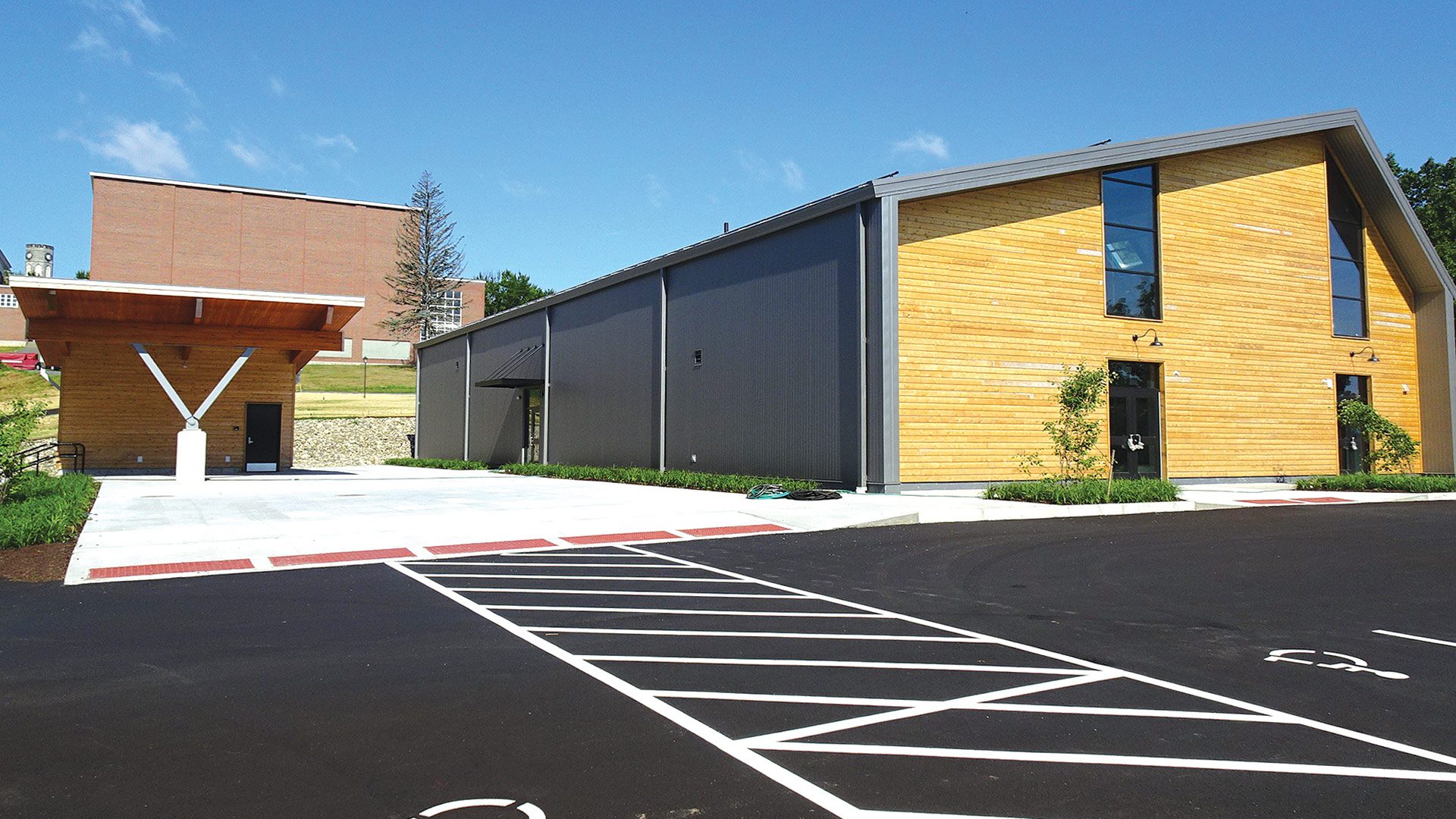Past Meets Future

Stephen Greenwald has built a strong reputation in a variety of construction niches over the past 47 years.
For Stephen Greenwald, growing his construction company was tied closely to how he saw his role in it.
“I started as a one-person company — just me, doing whatever I could do,” he said of the origin of Renaissance Builders in 1976. “The very small remodeling jobs … those were the only kinds of jobs I could get back then.”
A little over a decade later, he had nine employees, but he felt he was spending too much time building and renovating, and not enough time managing and planning.
“I still put on a tool belt and went to work most days, pounding nails,” he recalled. “And if you’re out there working, pounding nails every day in the field, the biggest issue is time commitment. You just don’t have enough time to run a company. You’re not answering the phone, doing estimates, meeting with clients, working on designs, and bidding other projects.”
As a result, “there’s a certain limit to your income,” he added. “So in the very late ’80s or very early ’90s, I came to the conclusion that, if I ever wanted this company to be more than a company where I worked in the field every day, we needed to grow in size and systems and management. So I made a conscious decision that we’re going to start looking at bigger jobs.”
“I came to the conclusion that, if I ever wanted this company to be more than a company where I worked in the field every day, we needed to grow in size and systems and management.”
Today, Renaissance, based in Gill, boasts 27 employees and a broad range of work, from residential to commercial to historical preservation, up and down the Pioneer Valley, from Springfield to Brattleboro.
By the early ’90s, “we were doing almost entirely residential work,” Greenwald recalled. “And two events happened that sort of pushed us in different directions.”
The first was an opportunity to build a water-treatment plant in Greenfield for groundwater pollution remediation, which exposed Renaissance to a new line of work. Then, in the late ’90s, Greenwald had an opportunity to tackle the interior fit-out of a food-processing facility in Turners Falls. “Now we have multiple clients in the food industry,” he said.

This award-winning wrestling arena at Northfield Mount Hermon School was designed by Jones Whitsett Architects and built by Renaissance Builders.
The bulk of the firm’s work is negotiated, though it also bids on public jobs. Since it started growing in earnest, Renaissance has dramatically broadened its scope, from restaurants and commercial kitchens — its area projects have included complete renovations for Blue Heron and Goten in Sunderland, and Hope & Olive in Greenfield — to retail establishments and service industries, including a new Greenfield Savings Bank branch in Turners Falls, which was built with energy-saving goals in mind (more on that aspect of the business later).
One intriguing renovation project was Ode Boutique in Northampton. A suspended ceiling hid the original plaster medallions on the ceiling of the downtown location, and the retail space was split in half by a wall. A new steel beam allowed the dividing wall to be removed, and the entire interior and storefront were redone in a fresh, rustic style.
Meanwhile, a three-building renovation project along Bank Row in the center of Greenfield included a complete interior and partial exterior renovation of the Allen and Pond buildings, with ground-floor and exterior renovations to the Siano building. The roof was raised to create a full third floor in the Pond building, and the basement was excavated to create usable retail space in the Allen Block. The project also included significant energy upgrades and facade renovations to historic specifications.
“During the pandemic, a lot of people were sort of investing in their homes, and they had some expensive projects to do.”
On the education front, Renaissance has done multiple public-school projects, and is starting work on Athol High School this summer. “That work ebbs and flows,” Greenwald said. “It’s driven by the purse strings of local governments and the state.”
Comforts of Home
Most of the company’s work is located in the Valley, but Renaissance has taken projects as far south as East Hartford. The balance between residential and commercial work tends to shift with the economy, but most residential projects have been high-end renovation work.
“There’s not a whole lot of new housing because new housing is particularly expensive these days, especially in Massachusetts,” Greenwald said. “And during the pandemic, a lot of people were sort of investing in their homes, and they had some expensive projects to do.”
Kitchens and bathrooms have been the biggest request, he added. “We have two crews that have done nothing but kitchens and baths for two years — just one right after the other.”

Renaissance Builders has long had a strong presence in residential work, including this home in Northampton.
While design styles have understandably changed over the decades, one striking change in recent years has been why people are renovating.
“Fifteen years ago, it was, ‘I’m in this house until I can afford to move to the next house — a bigger house or a better spot.’ I’m not sure what’s driving it, but now, they’re much more focused on making big improvements even beyond what the value of their house is,” he explained. “So, clearly, they want to live there. They want to be comfortable, and they realize that, by putting $150,000 into their home, they probably couldn’t turn around and sell it tomorrow for that. But they want what they want.”
One factor, of course, may be that buying a new home is historically expensive right now, due mainly to supply-and-demand issues in the Western Mass. market, as well as still-high costs of building materials. Renaissance has navigated the inflation issue in its own business along with all other area builders.
“Some basic materials have come back down — the cost of plywood is an example. And the cost of two-by-fours has returned to where it was,” Greenwald noted. “But what hasn’t come back down is, for example, the cost of a window. I can’t speak for what a manufacturer is going to do, but my guess is that manufacturers are now getting this price, so they see no reason to not keep charging it. It’s similar to what happened the first time fuel surcharges showed up on our deliveries. Well, fuel went back down, but the fuel surcharges never went away.”
Supply-chain issues continue to nag at the industry as well, he said. “It’s gotten better, but it hasn’t gone away. There are still issues every week with items not showing up, or items showing up damaged. The supply chain is still a big issue.”
That said, “we’re very busy,” Greenwald said, noting that Renaissance has a strong reputation with clients, especially when it comes to what he called “some unique problem-solving skills, which have earned us the loyalty of customers.”
For example, “we had a client that said, ‘we have this 11-foot-diameter, 40-foot-tall cylinder which we have to put inside our building. It’s in our parking lot. And you have to come up with a plan to cut a hole in the roof, and you can only have the roof open for 12 hours.’ So that was kind of a neat challenge.
“With those jobs, the clients aren’t too interested in the cost; they’re interested that you meet their 12-hour deadline,” he went on. “We have a reputation among a lot of these manufacturers, that we’re excellent at solving these problems.”
Renaissance has a reputation for historical-renovation work as well, including elements of that Bank Row project in Greenfield, which earned the owner, Icarus, Wheaten & Finch, statewide preservation awards, and other projects, like a window restoration of Forbes Library in Northampton.
Historic-preservation work is a clear area of opportunity, Greenwald said. “It’s one of those areas where there’s not a lot of competition. And on municipally funded jobs, a lot of times, you have to be DCAM-certified in historical renovation. There are very few contractors in this part of the state that have that designation; we’re one of them.”
Green Thoughts
Renaissance is also well-known for green building projects. Contractors have to be these days, of course, but Greenwald got involved in energy-efficient building in the late ’80s, when such work was far from the norm.
“Western Mass. Electric, which morphed into Eversource, had a program called Energy Crafted Homes back in the early ’90s, and we built the first model for it,” he said. “For those days, it was airtight and super-insulated. It was very progressive. So, in the ’90s, we started doing that.
“The whole industry has progressed, of course,” he went on. “Building science has grown exponentially in the last 30 years, and has really made some huge leaps forward. But that’s still important to us. Even the additions we do, there’s a component that falls into green building. It’s kind of expected, almost — I mean, the building code is demanding.”
Early on in the green movement, the industry recognized the value of insulation and air sealing, he explained. “Building science has discovered over the years that, if you control the amount of air that leaks into your house, not only can you improve the health and comfort of the occupants, but you can also reliably predict how much it’s going to cost to heat the house or cool the house and design accordingly. So that’s a big element.”
Building materials comprise another element. “And there’s a lot of discussion, with all sorts of points of view, about what constitutes green building. You will get lots of varying opinions, like, should you use foam for insulation because it’s made with petroleum products? But it has a long lifespan, and, from a insulation point of view, it’s doing its job, and may be the most effective of all the insulations available, versus using Rockwool or cellulose, which are both made with some form of recycled products.”
Whatever the specific debate, it’s clear that the bar is always rising on what constitutes quality green design.
“I built my house in 1995, and it was state-of-the-art in 1995,” Greenwald said. “It’s an antique by today’s building standards, but it’s still a very efficient house.”
At the end of the day, what he appreciates most about his job is the problem-solving aspect, and how gratifying it is when a client’s plan matches reality, whether it’s historical preservation or the cutting edge of green design — or both.
“I love being able to help people achieve their goals, and coming up with unique, out-of-the-box solutions to problems,” he said. “That’s what keeps me interested in this.”







